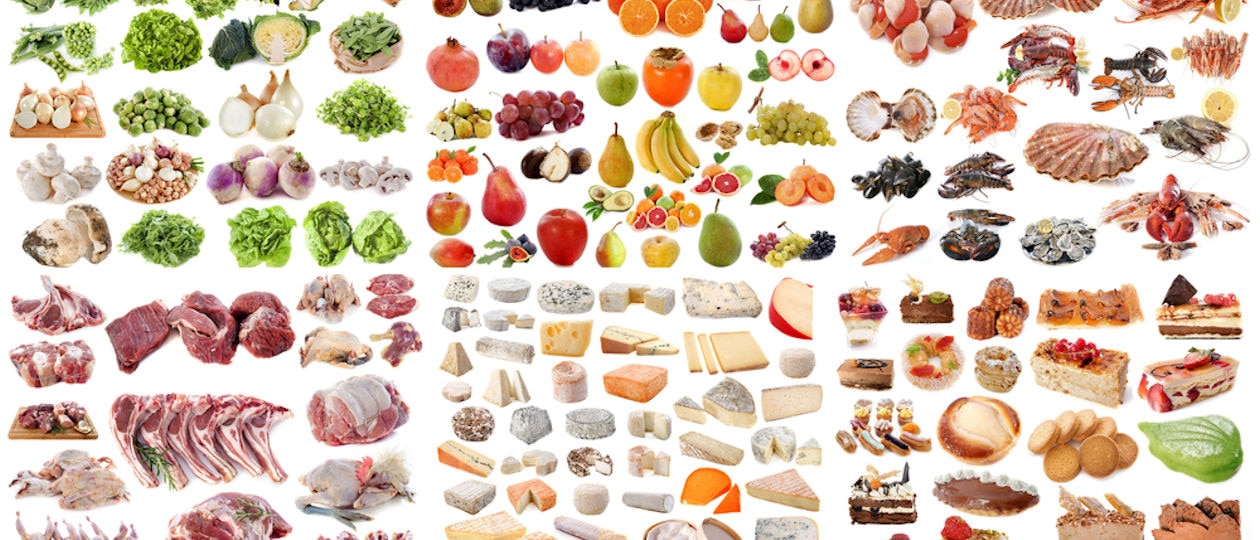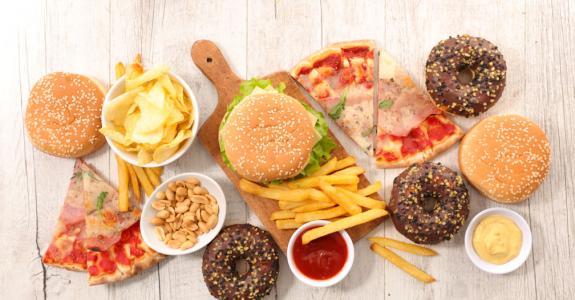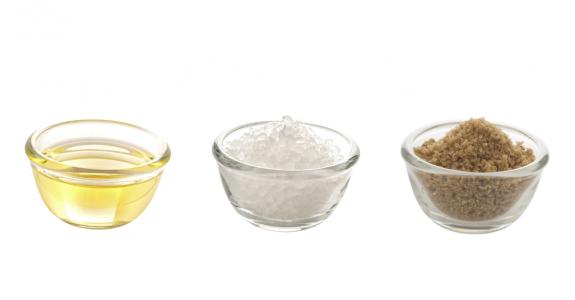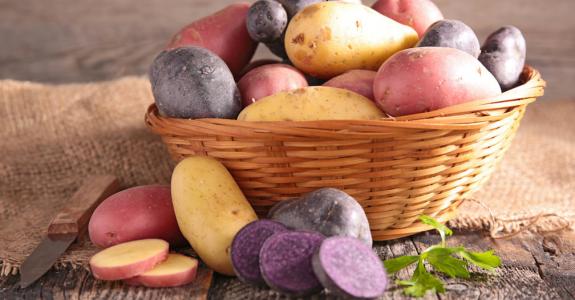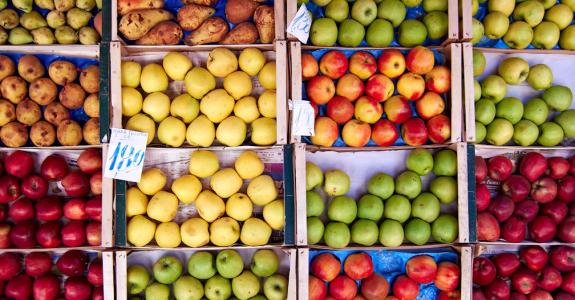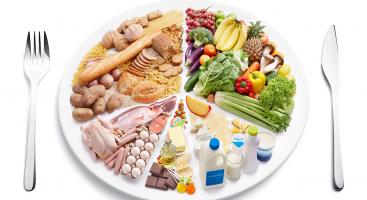“Everything in moderation…”
When it comes to ‘healthy’ eating, almost every dietitian, nutritionist and doctor uses the words ‘balanced’ and ‘moderation’.
Is eating everything in moderation sound nutritional advice? ©Shutterstock/cynoclub
So do the food bloggers and self-appointed health coaches, especially when selling their raw, organic, paleo, sugar-free, gluten-free dessert recipes. Yet “everything in moderation” is not always good advice, unless you really know what it means – and it might not be what you think.
Moderation is nearly always referred to when talking about typically ‘unhealthy’ kinds of food. Here is an example that represents what many people consider this advice to mean:
Breakfast: You enjoy two slices of wholemeal toast, one topped with peanut butter and the other honey, plus a glass of 100% pure fruit juice.
Morning tea: that delicious looking blueberry muffin from the café is calling your name, but no harm done, this is your first ‘treat’ for the day – it looks homemade and does have fruit in it.
Lunch: A homemade, fresh leafy salad, topped with… hmm… what about a Caesar dressing and some croutons today?
Afternoon tea: A cereal bar and coffee with skimmed milk to see you through the afternoon.
Dinner: A friend invites you to the local Indian takeaway; you cannot pass up the offer to share your favourite dish of butter chicken and poppadoms.
Supper: While watching TV before bed, you feel a bit peckish and grab some chocolate from the cupboard to go with a cup of tea.
Whether or not these food choices resonate with you personally, this is not what dietitians and nutritionists mean when they talk about ‘moderation’. Surprised? Read on. Here are three reasons why this eating pattern does not fit into evidence-based nutrition guidelines.
1. All the items ‘to be eaten in moderation’ are from the same category: non-core food
Savoury or sweet does not matter when it comes to moderation, because a takeaway Indian is counted1 in the same way as a bar of chocolate. In the above example, honey, a blueberry muffin, butter chicken, poppadoms and chocolate are all ‘non-core’ food; high in added sugar, saturated fats and/or salt, low in fibre and low in micronutrients. Fruit juice and muesli bars do contain a lot of essential nutrients, but also need to be eaten in moderation because they are high in sugar2, and cereal bars are sometimes high in fat and even in salt.
What is the problem with non-core food though? Sugar promotes tooth decay and, in the long run, may contribute to the development of type 2 diabetes. Sugar is often found in high levels in food which also contains high levels of saturated fat and salt. Excess saturated fat increases blood triglycerides and cholesterol levels, which can lead to heart disease and are also risk factors for a stroke. High salt intake is associated with increased blood pressure, also contributing to heart disease. Non-core food is often very energy-dense, mostly due to its fat content3. Regularly eating this food will increasingly tip you towards unhealthy weight gain.
In contrast, ‘core food’ is what you will find on your country’s healthy eating guidelines4; vegetables, fruit, grains and cereals, meat, fish, pulses, dairy products, oils, nuts and seeds. They have a higher nutrient density, are full of vitamins, minerals, proteins, fibre, unsaturated fats and antioxidants. Eating from these food groups will boost your energy levels, help you maintain muscle and bone strength, promote quicker recovery from illness, keep your skin, eyes, hair and nails healthy, and support all your organs to work efficiently.
Some core foodstuffs should not be eaten as often as others, for example we require far less meat or dairy products than we do vegetables, pulses and grains5. However, the latter are typically lower in kilocalories and can be eaten in larger quantities to achieve the same energy intake6.
Something to watch out for is the amount of dressings and sauces served with salads and other ‘healthy food’. A light amount is great for enhancing flavour, but if your lettuce is dripping in creamy dressing or your lean steak is swimming in gravy, it is definitely something to be eaten in moderation.
2. Moderation does not just mean variety
The daily outline described above includes a lot of variety, but this is different to moderation. We have thousands of different non-core food products available to us in supermarkets, cafes and takeaways – you could eat a different non-core food every day for a year and not run out of options; so simply consuming different kinds of food each day is not going to cut it.
It is important to include variety in your diet too, for example, biological variety – food which comes from different biological origins. Bread, pasta, crackers, Weetabix, crumpets, flour, cake and biscuits are all wheat based. That is one primary origin. Most milk, yoghurt, cheese, cream and butter is made from cow’s milk, which is just one biological origin. A diet with a wide variety of grains and cereals over a month, might include wheat pasta, rye bread, oats, rice, pearl barley, polenta, quinoa, millet and sorghum.
Then, not only different plants, but different varieties of those plants. Did you know there were once over 70007 varieties of apples and 40008 varieties of potatoes? Not all of these are available to us in the shops, but you can probably find at least 2-5 different varieties of most fruit and vegetables with slightly different nutrients and taste profiles. The more variety you eat, the easier it is to obtain all the essential nutrients your body needs, plus lots of bonus antioxidants and other health-promoting compounds. Plus, it is of course, more interesting!
3. Treats, sweets and takeaways can be part of a balanced diet ONLY if they are not replacing the regular consumption of core food
Junk food is not evil and does not cause weight gain or cancer in and of itself. Yet when it displaces core food, as seen in the diagram in column C, it will live up to its reputation as a health risk.
Displacing core food – particularly fruit and vegetables – by non-core food is a double whammy of disaster. Not only does it have all the negative impacts explained above, but you miss out on the essential nutrients. Whole plant food also contains antioxidants that counteract oxidative stress, a type of cellular damage caused by infection, trauma, heat injury, toxins, chemical exposure, excessive exercise and some metabolic processes. Oxidative stress contributes to all sorts of health conditions, some including inflammatory diseases, heart disease, neurological disorders and cancer, as well as to speeding up the ageing process9. Antioxidants help prevent this damage on a cellular level, which is why fruit and vegetables are often considered ‘disease prevention’ food. While fruit should be eaten in lesser quantities than vegetables due to its natural sugars, consumption of vegetables does not need to be moderated!
The bottom line
We all tend to eat non-core food – it is a significant part of our social, mental and cultural health, which are equally as important as physical health when it comes to our wellbeing. Conceptually, consuming non-core food in moderation looks something like column B. In practical terms, it means consuming such food 6-8 times a week, not 2-3 times a day.



